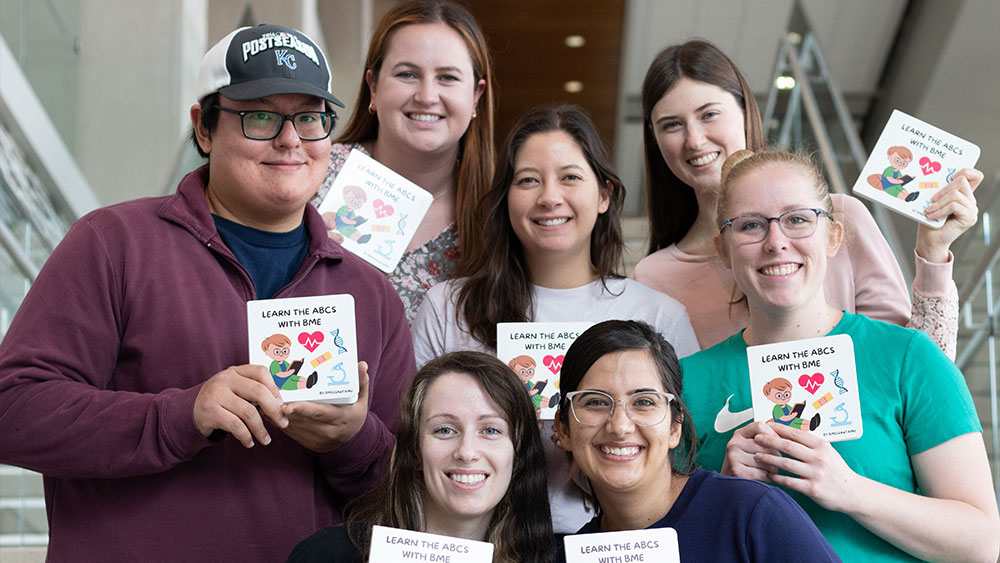
Doctoral students in the Department of Biomedical Engineering at Texas A&M University wrote a book to introduce all ages to the multi-faceted field of biomedical engineering. Designed as a children’s book, Learn the ABCs with BME is a product of the Biomedical Engineering Graduate Student Association’s community outreach project for the 2021-22 academic year. An almost year-long labor of love is now garnering the attention it deserves.
“I didn’t expect it to be this popular. I don’t think any of us did, and it makes us really happy to see the traction it’s getting,” said Abigail Clevenger, an author of the book.
The project originated under the guidance of then-graduate student Dr. Annie Hedman ’18, ’22. Upon Hedman’s graduation, Seelay Tasmim became the project lead.
“No one had anything to gain from coming to the project meetings. We had no tangible rewards or recognition to gain for our participation. We are volunteers driven solely by our passion for biomedical engineering and our desire to spread awareness about the field, especially to young kids,” said Tasmim.
With a committee of authors assembled, the group began brainstorming words for each letter of the alphabet. Ultimately, the team narrowed down the list to terms and concepts that best reflect the department’s four focus areas: biomaterials, biomechanics, bioinstrumentation and biomolecular and cellular engineering. After gathering departmental input, the team assembled the final ABC list for the book.
Explaining each concept with kid-friendly descriptions and royalty-free images proved to be challenging.
“Take the term ‘genetic engineering’ for example. You’re trying to explain manipulating the DNA by modifying it, cutting it or putting it together to change an organism’s characteristics. There are so many concepts in one term, and you have to make it very easy to understand in a short sentence,” explained Tasmim, whose focus of study is using smart and stimuli-responsive materials to build artificial muscles.
Authors consulted with their peers, faculty and staff within the biomedical engineering department and also branched outside the department, seeking input from parents, friends and teachers. This feedback helped them gain perspective on how terms, images and concepts may be received by readers of all ages.
For Clevenger, who studies how mechanics play a role in cancer, it was eye-opening to take a step back and look at all the exciting things that happen in the department. “It was cool to see the breadth of biomedical engineering projects within our department as we worked on building out the book,” she said. Clevenger looks at the book as a tool to expose kids to a field gaining popularity and significance.
“For older kids — from intermediate to high school students — biomedical engineering is probably a new concept. It was important for this book to stay broad and cover many different subdisciplines across the field,” said Maria Lyons, program manager for the department.
Many young and school-age people are not exposed to the field of biomedical engineering or don’t understand everything it encompasses. Topics range from the mechanics of the body, growing tissues and organs, what can be put in the body without doing damage, lasers used to check blood sugar and even new biotechnology and biopharma. All these topics and more are explored in Learn the ABCs with BME to comprehensively showcase biomedical engineering.
For the past 50 years, biomedical engineering at Texas A&M has innovated, educated and led advances in the field. The department has grown and adapted over the years to continue to positively impact health outcomes.